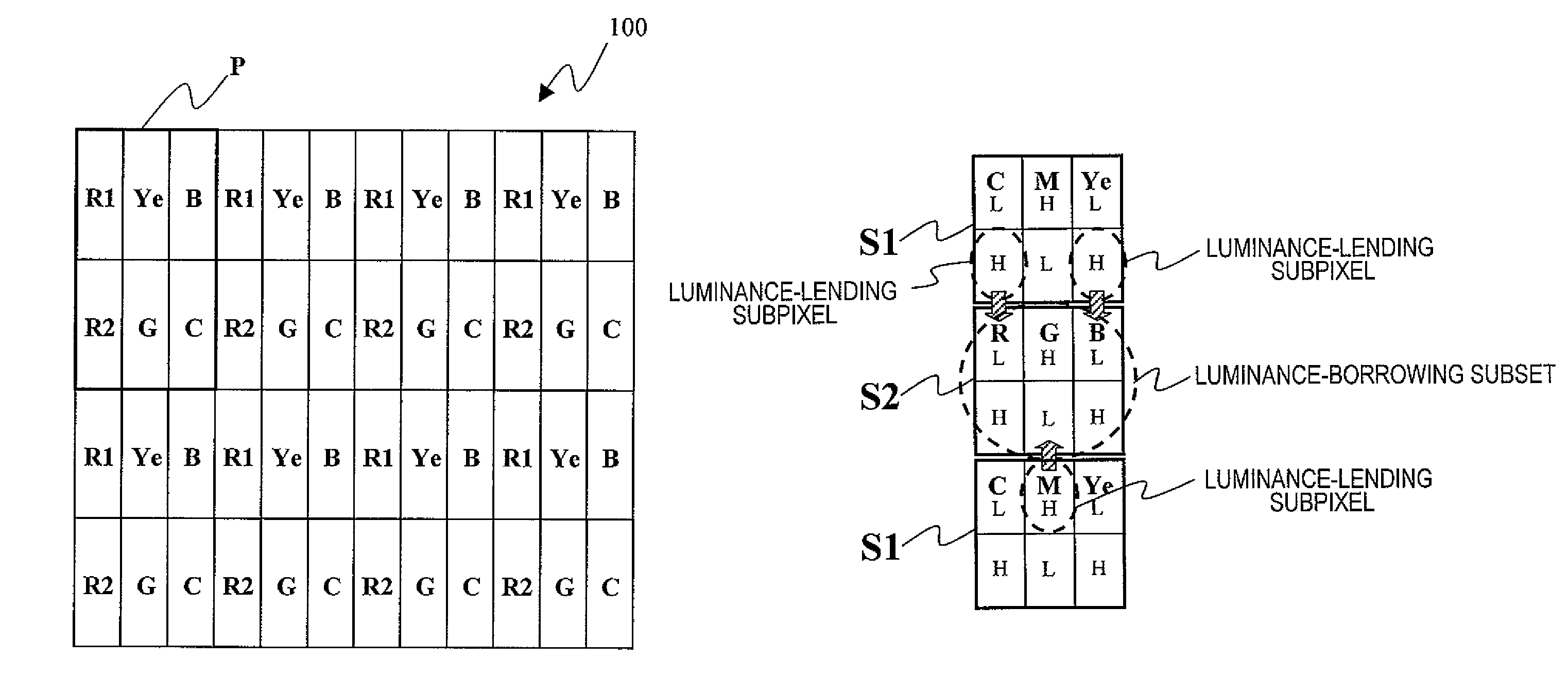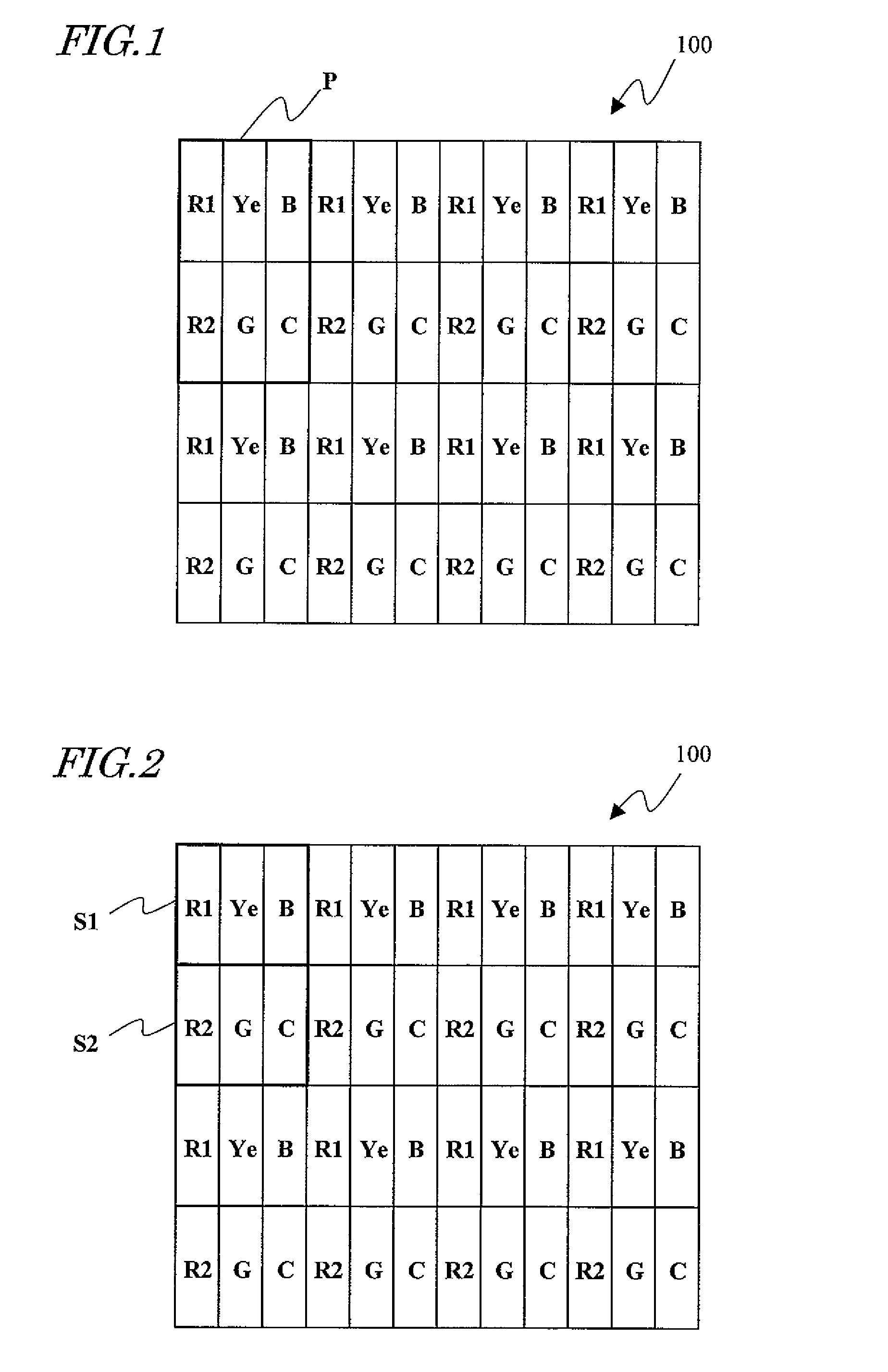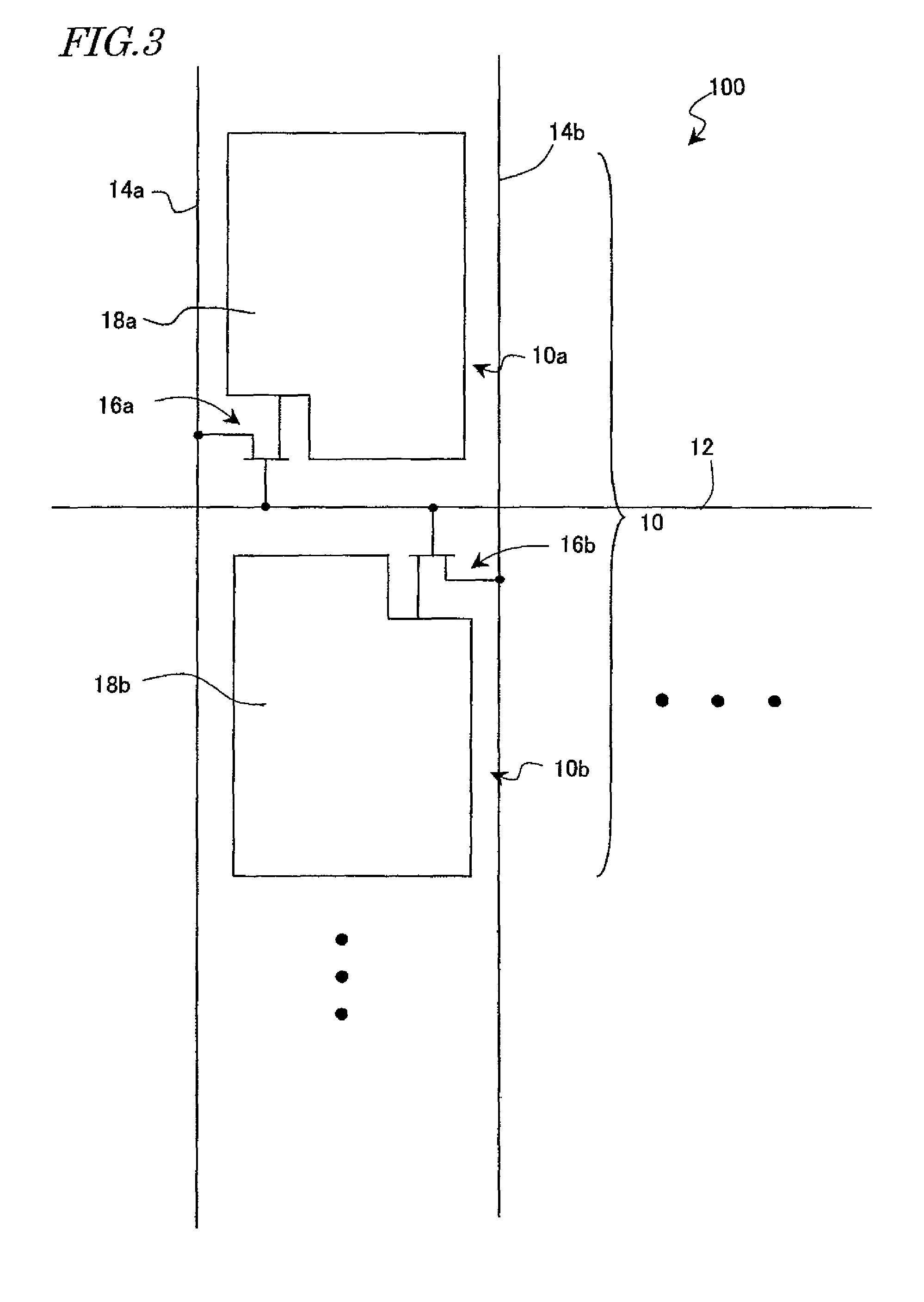Multiple-primary-color liquid crystal display device
a liquid crystal display and primary color technology, applied in the field of liquid crystal display devices, can solve problems such as the reproduction of some object colors, and achieve the effects of higher luminance, improved display effect, and improved display efficiency
- Summary
- Abstract
- Description
- Claims
- Application Information
AI Technical Summary
Benefits of technology
Problems solved by technology
Method used
Image
Examples
embodiment 1
[0123]FIG. 1 illustrates a pixel arrangement for a multi-primary-color liquid crystal display device 100 (which will be simply referred to herein as an “LCD 100”). As Shown in FIG. 1, the LCD 100 includes first and second red pixels R1 and R2 representing the color red, a green pixel G representing the color green, a blue pixel B representing the color blue, a yellow pixel Ye representing the color yellow, and a cyan pixel C representing the color cyan. These pixels are arranged in columns and rows to form a matrix pattern. More specifically, rows of pixels, in each of which the first red, yellow and blue pixels R1, Ye and B are arranged cyclically, and rows of pixels, in each of which the second red, green and cyan pixels R2, G and C are arranged cyclically, are alternately arranged in the column direction. Each pixel includes a liquid crystal layer and a plurality of electrodes for applying an electric field to the liquid crystal layer.
[0124]As shown in FIG. 1, the LCD 100 can con...
embodiment 2
[0152]FIG. 20 illustrates a pixel arrangement for an LCD (multi-primary-color liquid crystal display device) 200 as a second specific preferred embodiment of the present invention. Just like the LCD 100 shown in FIG. 1, the LCD 200 includes first and second red pixels R1, R2, green pixels G, blue pixels B, yellow pixels Ye, and cyan pixels C.
[0153]In the LCD 200, however, the first red, yellow, blue, second red, green and cyan pixels R1, Ye, B, R2, G and C are arranged cyclically within the same row so that the subsets S1 and S2 alternate with each other in the row direction. That is why even though a luminance is lent and borrowed between two subsets that are adjacent to each other in the column direction in the LCD 100, a luminance is lent and borrowed between two subsets that are adjacent to each other in the row direction in this LCD 200.
[0154]FIGS. 21 and 22 schematically illustrate how to lend and borrow a luminance in this LCD 200. First of all, please note that the shape of ...
embodiment 3
[0171]FIG. 42 illustrates an arrangement of pixels for an LCD (multi-primary-color liquid crystal display device) 300 as a third specific preferred embodiment of the present invention. As shown in FIG. 42, the LCD 300 includes red pixels R representing the color red, green pixels G representing the color green, blue pixels B representing the color blue, cyan pixels C representing the color cyan, magenta pixels M representing the color magenta, and yellow pixels Ye representing the color yellow. These pixels can form a number of subsets S1, each including cyan, magenta and yellow pixels C, M and Ye, and a number of subsets S2, each including red, green and blue pixels R, G and B. In this preferred embodiment, rows of pixels in which cyan, magenta and yellow pixels C, M and Ye are arranged cyclically and rows of pixels in which red, green and blue pixels R, G and B are arranged cyclically alternate with each other in the column direction. Thus, a number of subsets S1 or S2 of the same...
PUM
 Login to View More
Login to View More Abstract
Description
Claims
Application Information
 Login to View More
Login to View More - R&D
- Intellectual Property
- Life Sciences
- Materials
- Tech Scout
- Unparalleled Data Quality
- Higher Quality Content
- 60% Fewer Hallucinations
Browse by: Latest US Patents, China's latest patents, Technical Efficacy Thesaurus, Application Domain, Technology Topic, Popular Technical Reports.
© 2025 PatSnap. All rights reserved.Legal|Privacy policy|Modern Slavery Act Transparency Statement|Sitemap|About US| Contact US: help@patsnap.com



